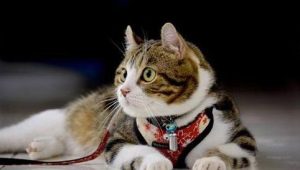The terms “can wear clothes” and “suitable for wearing clothes” carry different implications. “Can wear clothes” means that cats are able to wear them without significant negative effects, though it doesn’t suggest any positive benefits either. “Suitable for wearing clothes” would mean that not only can they wear them, but there are also positive effects. So, cats can wear clothes, but it doesn’t necessarily mean they should, as it’s not the most suitable for them.

Is It Okay to Dress Up Your Cat?
Cats have more sensitive skin than dogs. Their sensory nerve endings are directly connected to the skin and even some hairs. Therefore, their skin is highly sensitive to external stimuli. This sensitivity is linked to their visual system. Cats have dynamic vision and are farsighted. For objects closer than 20 cm, especially stationary ones, their vision is unclear. So, when approaching prey, cats rely on the whiskers and hairs on their face to sense the prey’s location and status. For example, when catching a bird, cats use their facial and hand hairs to accurately locate and grab the prey. Similarly, cats use their whiskers to sense the prey’s breathing to confirm it’s dead before releasing it.
This high sensitivity of the skin and fur also means cats dislike getting their fur wet. Wet fur can be as uncomfortable for them as our hair being stuck with glue. So, if a cat wears clothes, its fur is covered and can’t breathe, which can be quite uncomfortable.
However, in some cases, such as when cats are unwell, physically weak, elderly, or hairless (like Sphinx cats), they may need clothes for warmth, especially in cold weather.
In summary, while cats can wear clothes and sometimes need to, most cats don’t like wearing them. It’s important to prioritize your cat’s comfort and well – being. If you do dress your cat, choose comfortable, breathable fabrics and ensure the clothes aren’t too tight. Always monitor your cat for any signs of discomfort.
